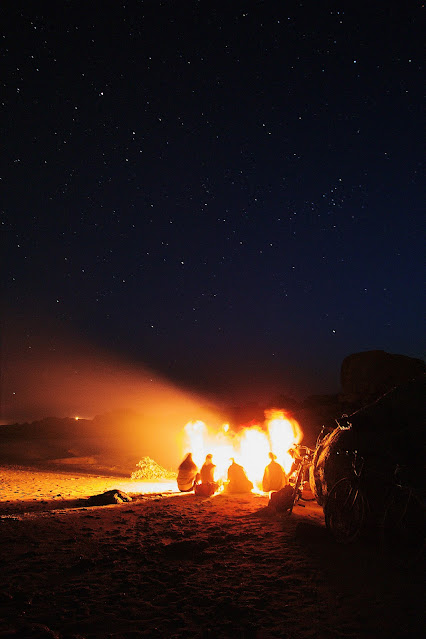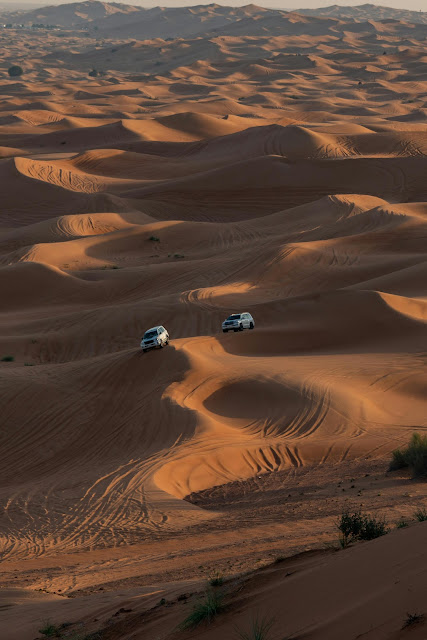A Comprehensive Guide to Desert Adventures
The Moroccan Sahara Desert, a vast expanse of golden dunes and rugged landscapes, has captivated travelers for centuries. This awe-inspiring destination offers a unique blend of natural beauty, rich culture, and thrilling adventures. In this comprehensive guide, we'll explore the many facets of the Moroccan desert, from its geography and climate to the myriad activities that await intrepid explorers. Whether you're planning your first desert expedition or seeking new experiences in this magical realm, this article will serve as your ultimate resource for discovering the wonders of the Moroccan Sahara.
1. Understanding the Moroccan Desert Landscape
The Moroccan Sahara is part of the larger Sahara Desert, which spans across much of North Africa. Within Morocco, the desert encompasses several distinct regions, each with its own unique characteristics:
- Erg Chebbi: Located near Merzouga, Erg Chebbi is home to some of Morocco's most iconic sand dunes, reaching heights of up to 150 meters.
- Erg Chigaga: Less accessible but equally stunning, Erg Chigaga offers a more remote desert experience near M'Hamid.
- Draa Valley: This lush river valley cuts through the desert, creating a stark contrast between the arid landscape and palm-fringed oases.
- Zagora: Known as the "Gateway to the Desert," Zagora serves as a starting point for many Sahara expeditions.
- Anti-Atlas Mountains: These rugged mountains form the northern border of the desert, offering dramatic scenery and opportunities for trekking.
2. Climate and Best Time to Visit
The Moroccan desert experiences extreme temperature variations, with scorching hot days and cold nights. Summers (June to August) can see daytime temperatures soar above 40°C (104°F), while winter nights (December to February) can drop below freezing.
The best time to visit the Moroccan desert is during the shoulder seasons:
- Spring (March to May): Comfortable temperatures and occasional wildflower blooms make this an ideal time for desert exploration.
- Fall (September to November): Another excellent period with mild weather, perfect for outdoor activities.
While winter can be cold, it offers unique opportunities for stargazing due to exceptionally clear skies. Summer, despite the heat, can be suitable for early morning or late evening activities.
3. Getting to the Moroccan Desert
Accessing the Sahara typically involves flying into major Moroccan cities like Marrakech, Fes, or Ouarzazate, followed by a road journey to the desert. Popular routes include:
- Marrakech to Merzouga: A scenic 10-12 hour drive through the Atlas Mountains and Draa Valley.
- Fes to Merzouga: A longer route (about 7-8 hours) passing through the Middle Atlas Mountains.
- Ouarzazate to Zagora: A shorter 4-5 hour drive for those seeking a quicker desert access.
4. Top Activities in the Moroccan Desert
4.1 Camel Trekking in the Sahara
Camel trekking remains one of the most iconic and popular activities in the Moroccan desert. These "ships of the desert" have been the traditional mode of transport for centuries, and riding atop one offers a unique perspective of the vast Sahara landscape.
Key aspects of camel trekking:
- Duration: Trips can range from a few hours to several days, depending on your preferences.
- Routes: Popular treks include journeys through Erg Chebbi or Erg Chigaga dunes.
- Guides: Experienced local guides lead the treks, sharing insights about desert life and navigation.
- Accommodation: Multi-day treks often include overnight stays in desert camps.
Tips for camel trekking:
- Wear comfortable, loose-fitting clothing and bring sun protection.
- Stay hydrated and listen to your guide's instructions for a safe and enjoyable experience.
4.2 Desert Camping and Stargazing
Spending a night in the Sahara is an unforgettable experience that allows you to fully immerse yourself in the desert environment. From basic Berber tents to luxury glamping setups, there's an option for every type of traveler.
Types of desert camping experiences:
- Traditional Berber camps: Simple yet authentic accommodations in wool tents.
- Luxury desert camps: High-end options with comfortable beds, private bathrooms, and gourmet meals.
- Wild camping: For the adventurous, some tours offer the chance to sleep under the stars with minimal setup.
Stargazing in the desert:
The Moroccan Sahara offers some of the clearest night skies in the world, making it a paradise for stargazers and astrophotographers. Many camps offer telescopes and guided stargazing sessions, allowing you to observe constellations, planets, and the Milky Way in stunning clarity.
4.3 Sandboarding and Sand Skiing
For thrill-seekers, sandboarding and sand skiing provide an exhilarating way to experience the desert's towering dunes. Similar to their snow-based counterparts, these activities involve sliding down sand dunes on specially designed boards or skis.
Key information:
- Best locations: Erg Chebbi and Erg Chigaga offer ideal conditions for sandboarding.
- Equipment: Most tour operators provide the necessary gear, including boards and wax.
- Skill levels: Suitable for beginners to advanced riders, with instruction available for novices.
Tips for sandboarding:
- Wear closed shoes and bring sunglasses to protect against blowing sand.
- Start on smaller dunes and work your way up to the larger ones as you gain confidence.
4.4 4x4 Desert Safaris
Exploring the Moroccan desert by 4x4 vehicle allows you to cover more ground and access remote areas that would be challenging to reach by other means. These exhilarating tours offer a mix of adventure and sightseeing.
Types of 4x4 desert safaris:
- Half-day tours: Quick excursions into the desert, ideal for those short on time.
- Multi-day expeditions: In-depth explorations covering various desert landscapes and attractions.
- Custom tours: Tailored itineraries combining 4x4 driving with other activities like camel trekking or camping.
Highlights of 4x4 tours:
- Navigate diverse terrains, from rocky plateaus to soft sand dunes.
- Visit remote Berber villages and hidden oases.
- Enjoy panoramic views and photo opportunities from elevated vantage points.
4.5 Visiting Desert Oases and Berber Villages
The Moroccan desert is not just endless sand; it's also home to lush oases and traditional Berber communities. Exploring these areas offers insight into the resilience of desert life and the rich cultural heritage of the region.
Popular oases to visit:
- Tinghir: A stunning oasis with a dramatic gorge and lush palm groves.
- Fint Oasis: A hidden gem near Ouarzazate, featuring a traditional mud-brick village.
- Draa Valley: One of Morocco's largest oases, stretching over 100 kilometers.
Berber village experiences:
- Visit traditional homes and learn about daily life in the desert.
- Participate in local crafts like carpet weaving or pottery making.
- Sample authentic Berber cuisine and tea ceremonies.
4.6 Desert Trekking and Hiking
For those who prefer to explore on foot, the Moroccan desert offers numerous trekking and hiking opportunities. These range from short walks to multi-day expeditions, allowing you to immerse yourself in the desert environment.
Popular trekking areas:
- Todra Gorge: A stunning limestone canyon offering various hiking trails.
- Jebel Saghro: A rugged mountain range in the Anti-Atlas, perfect for more challenging treks.
- Erg Chebbi surroundings: Gentle walks around the base of the dunes and nearby rocky areas.
Tips for desert trekking:
- Hire a local guide for safety and to enhance your understanding of the environment.
- Carry plenty of water and sun protection.
- Wear sturdy boots and breathable, light-colored clothing.
4.7 Photography Tours in the Sahara
The Moroccan desert provides a dream canvas for photographers, with its dramatic landscapes, vibrant colors, and unique light conditions. Specialized photography tours cater to both amateur and professional photographers looking to capture the essence of the Sahara.
Key photography opportunities:
- Golden hour shots of the dunes at sunrise and sunset.
- Night photography and astrophotography in the clear desert skies.
- Portraits of local Berber people and candid shots of desert life.
- Macro photography of desert flora and fauna.
Tips for desert photography:
- Protect your equipment from sand and dust with appropriate covers.
- Bring a sturdy tripod for low-light and long-exposure shots.
- Consider hiring a local guide to find the best shooting locations and navigate cultural sensitivities when photographing people.
4.8 Hot Air Balloon Rides
For a truly unforgettable perspective of the Moroccan desert, consider taking a hot air balloon ride. These magical experiences typically take place at sunrise, offering breathtaking views of the desert landscape as it's bathed in the soft morning light.
What to expect:
- Early morning departure to catch the sunrise.
- Flights usually last 45-60 minutes.
- Panoramic views of the desert, including dunes, oases, and distant mountains.
- Many tours include a traditional Berber breakfast upon landing.
- Safety and booking:
- Choose reputable operators with experienced pilots and proper safety certifications.
- Book in advance, as hot air balloon rides are popular and often have limited availability.
4.9 Wellness and Yoga Retreats
The serene and otherworldly environment of the Moroccan desert provides an ideal setting for wellness activities and yoga retreats. Many tour operators now offer specialized trips that combine desert exploration with mindfulness practices.
Types of wellness experiences:
- Yoga and meditation retreats in desert camps.
- Spa treatments using traditional Moroccan techniques and natural desert ingredients.
- Mindfulness walks and silent retreats in the dunes.
Benefits of desert wellness retreats:
- Disconnect from technology and reconnect with nature.
- Practice yoga and meditation in a uniquely inspiring setting.
- Experience the therapeutic effects of the desert environment on mental and physical well-being.
4.10 Cultural Experiences and Festivals
- The Moroccan desert is not just a natural wonder but also a cultural treasure trove. Engaging with local traditions and participating in cultural events can greatly enrich your desert experience.
Cultural experiences:
- Learn traditional Berber music and dance.
- Participate in a tea ceremony or cooking class.
- Visit local markets and artisan workshops.
Desert festivals:
- International Festival of Nomads (M'Hamid): Celebrating nomadic culture with music, dance, and exhibitions.
- Tafraoute Almond Blossom Festival: A springtime celebration in the Anti-Atlas region.
- Moussem of Tan-Tan: A UNESCO-recognized gathering of nomadic tribes (held in the coastal desert region).
5. Responsible Desert Tourism
- As the popularity of Moroccan desert tourism grows, it's crucial to practice responsible travel to preserve this fragile ecosystem and respect local communities.
Tips for sustainable desert travel:
- Choose eco-friendly accommodations and tour operators.
- Respect local customs and ask permission before photographing people.
- Minimize waste and pack out what you bring in.
- Support local communities by purchasing handicrafts and using local guides.
- Conserve water and energy, which are precious resources in the desert.
6. Preparing for Your Moroccan Desert Adventure
Proper preparation is key to enjoying a safe and comfortable desert experience. Here are some essential tips:
Health and safety:
- Consult your doctor about any necessary vaccinations or medications.
- Bring a basic first-aid kit, including remedies for stomach issues and sunburn.
- Stay hydrated and protect yourself from the sun.
Packing essentials:
- Lightweight, breathable clothing for day and warm layers for night.
- Sturdy, comfortable shoes for walking on sand and rocky terrain.
Sun protection:
- hat, sunglasses, and high-SPF sunscreen.
- Reusable water bottle and snacks.
- Camera and spare batteries.
- Cash for areas where credit cards may not be accepted.
Conclusion
The Moroccan desert offers a wealth of experiences that cater to every type of traveler, from adrenaline junkies to culture enthusiasts and nature lovers. By understanding the diverse landscapes, climate considerations, and array of activities available, you can plan an unforgettable journey into one of the world's most captivating environments. Whether you're riding camels across golden dunes, stargazing in the clear night sky, or immersing yourself in Berber culture, the Moroccan Sahara promises adventures and memories that will last a lifetime. As you embark on your desert exploration, remember to travel responsibly, respecting both the delicate ecosystem and the rich cultural heritage of this magical destination.





















0 Comments